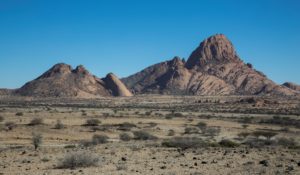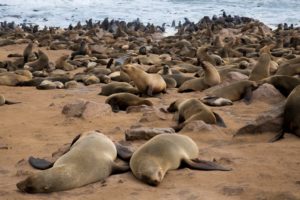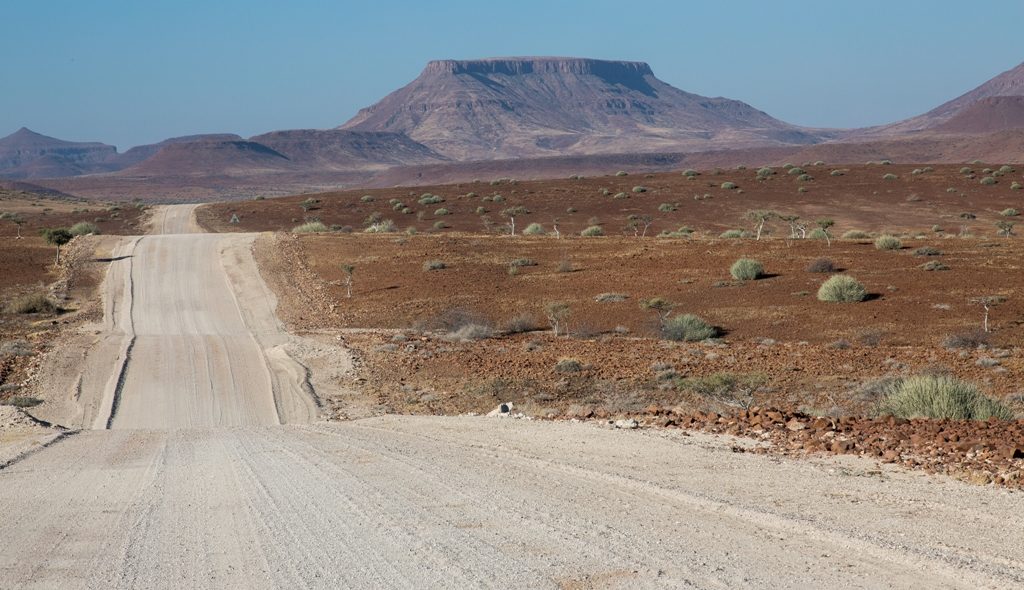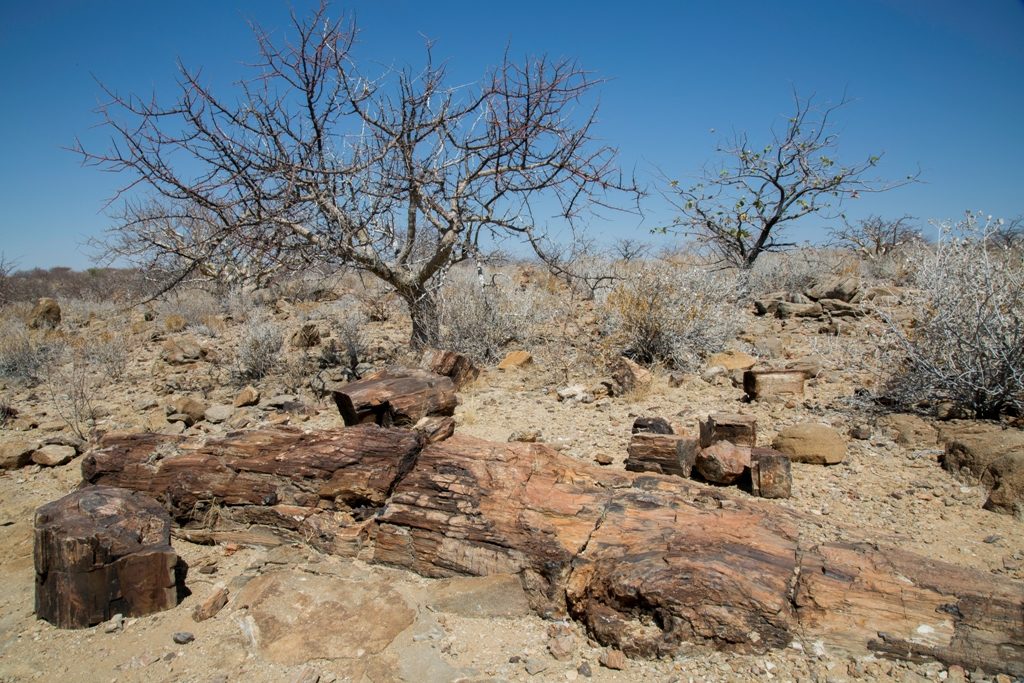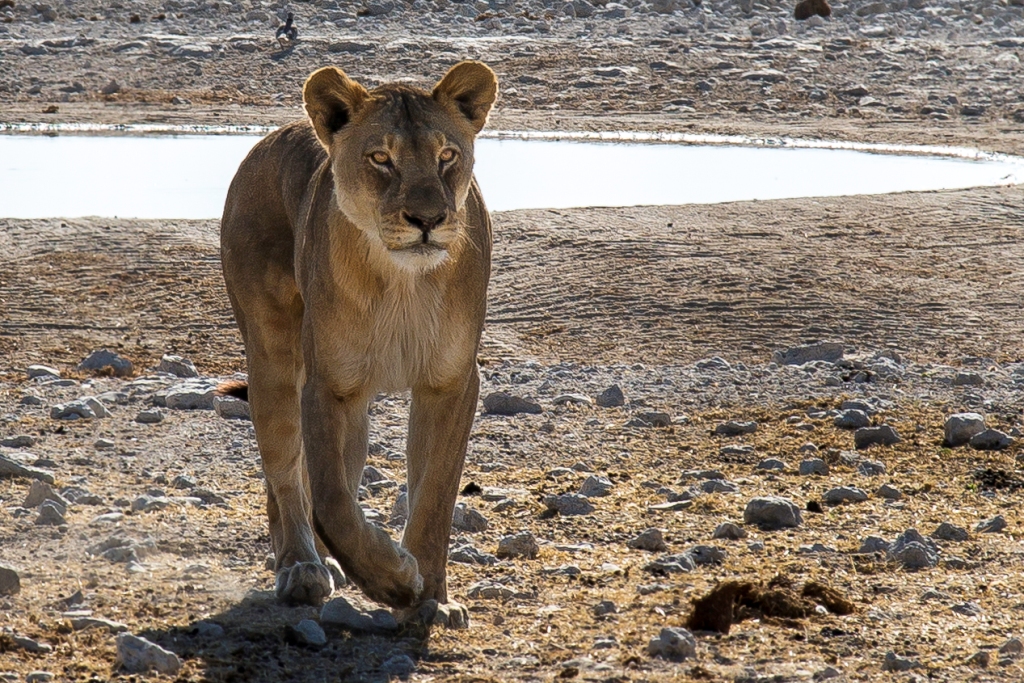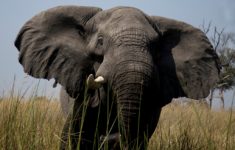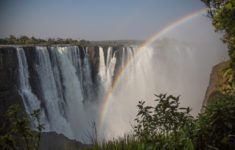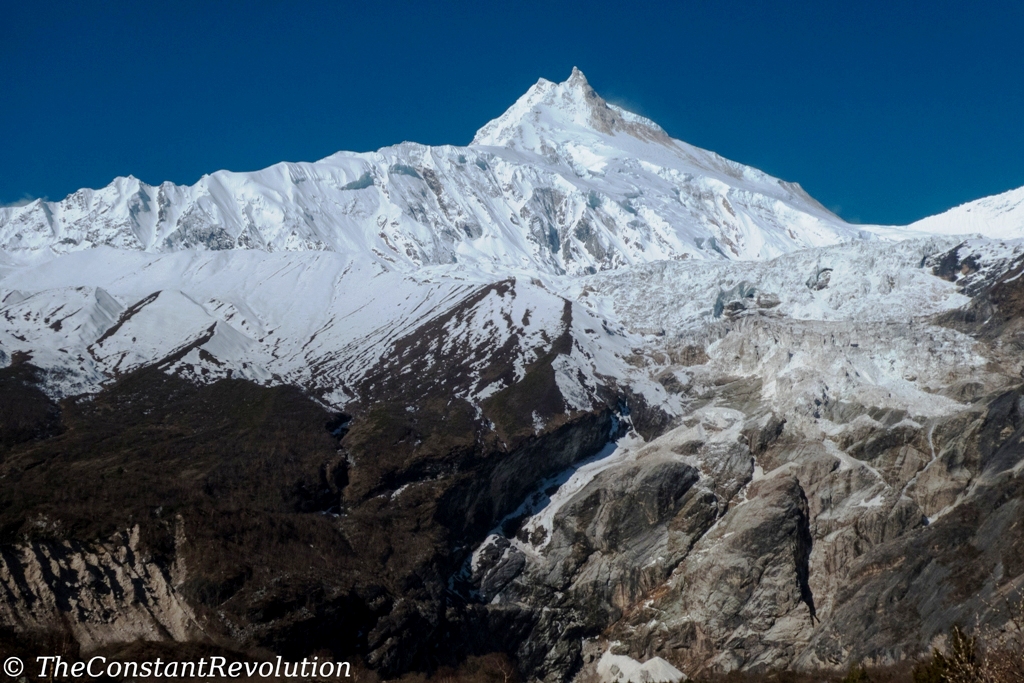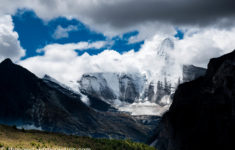A road trip through Namibia’s deserts, from Sussuvlei to Abu Huab, passing by the Skeleton Coast, at the discovery of ancient rock engravings and petrified trees.
This article is part of a series of four, to describe a single travel itinerary that included Namibia, Botswana and Zimbabwe. The whole itinerary lasted three weeks, during which we (myself and four more friends) drove for about 5000 Km (including the safaris), and can be found on this online map.
In the descriptions, I’ll add useful information for the specific places. At the bottom of each article I’ll explain the organisation of the whole trip: when to go, renting the car, roads conditions, camping, safety, costs… One important thing right away though: book six months in advance at least, or you risk not finding any accommodation in the best spots, especially inside the national parks, or a good car.
WINDHOEK
We spent only one night in Windhoek, our primary focus was really to go out in nature. So, not enough time to feel the vibe, as it were. However, there are some nice restaurants, and right away we discovered the main diet, at least in this part of Africa, is BBQ! Good if you are a meat eater, bad if you are trying really hard to be a vegetarian… in the former instance, then you’ll have the possibility to taste some really exotic meat.
Anyways, we got our super duper four wheeler and off we went.
SOSSUSVLEI MAGIC
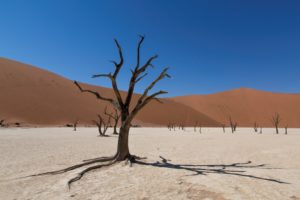 Bam! We start with one of the highlights of the whole trip: the famous red dunes of Sossusvlei, and its even more famous petrified trees. Better to arrive early in Sesriem, the entrance of the National Park, as there might be quite a long queue of vehicles waiting outside the doors to open, which normally happens right after dawn. We had to wake up at 4 AM to be there among the firsts, as our camping was quite far away. However, it was a incredibly beautiful and wild camping, one of the best of the whole trip, and highly recommended, at Farm Hauchabfontein (B on the map).
Bam! We start with one of the highlights of the whole trip: the famous red dunes of Sossusvlei, and its even more famous petrified trees. Better to arrive early in Sesriem, the entrance of the National Park, as there might be quite a long queue of vehicles waiting outside the doors to open, which normally happens right after dawn. We had to wake up at 4 AM to be there among the firsts, as our camping was quite far away. However, it was a incredibly beautiful and wild camping, one of the best of the whole trip, and highly recommended, at Farm Hauchabfontein (B on the map).
After entering the national park with the car there’s still a 40 minutes drive before getting to the end of the road. Many people stop mid-way at Dune 45, the highest in the park, to go for a walk there too. At the end of the road, the little bit of drive left becomes really sandy.
Some people attempt to continue with their own means of transportation, and often get stuck in the sand, we saw several cases. Also helped one, I mean, I was taking photos, but the others helped. Normally rescue doesn’t come quickly though, and if you get stuck you risk ruining your day. Alternatively, some jeep service can take you on for a relatively small sum. We went for the latter option, to arrive at the famous spot with the petrified trees.
 Everyone must have seen a photo of this view. It’s like New York, or the Tour Eiffel, right? But the park is really not about the petrified trees, as good as a spot that is, nor that is the only spot to explore. It’s about the colours and the shapes of the dunes, and the contrast they create against a permanently intense blue sky and infinite horizons of dunes. There are no photos, or words as it matters, to describe this place. There’s something magic about it. The more you look around, as you climb one of the dunes bare feet, the more its beauty becomes mesmerizing. It’s a must visit for all!
Everyone must have seen a photo of this view. It’s like New York, or the Tour Eiffel, right? But the park is really not about the petrified trees, as good as a spot that is, nor that is the only spot to explore. It’s about the colours and the shapes of the dunes, and the contrast they create against a permanently intense blue sky and infinite horizons of dunes. There are no photos, or words as it matters, to describe this place. There’s something magic about it. The more you look around, as you climb one of the dunes bare feet, the more its beauty becomes mesmerizing. It’s a must visit for all!
If you are lucky, you might see some Oryx or other animals in the area too. It’s obviously very hot, so bring food and a lot of water. Otherwise, just enjoy! Quick tip: take a run down one of the dunes, so much fun 😉
SWAKOPMUND AMUSEMENTS
Our next destination has been Swakopmund, along with the coastline, where we stayed a couple of days in order to go for a side trip to Spitzkoppe, and do some sandboarding on the dunes that surround the town. Actually, all my friends went sandboarding while I went for some quad driving in the desert, and I had the time of my life. Really a lot of fun, while at the same time getting to see some desert creatures and learning about the surrounding environment. I remember I was smiling all the time!
It’s also possible to see the beautiful pink coloured flamingos on the sea shore in a corner of the town. You can try to get closer by foot, crossing the long beach that leads to the sea, but they are quite shy and tend to flee when they see something approaching even from afar. Anyway, it’s quite interesting to see them at sea, and with a kind of industrial background.
Besides these fun activities, nothing much of Swakopmund town. It’s pretty humid and cold overnight: in the morning, until around 11 AM, it seems as though clouds are covering the sky, but it’s a kind of misty mix of wind lifted sand and humidity to stop the sun rays from passing through. The mist disappears when the sun is warm enough, for the whole afternoon the sky is blue as usual, and then it comes back. This peculiar microclimate ends as soon as you drive few Km inland, and away from the ocean! The town, at least in August, is also pretty empty. Most people choose to skip this part of Namibia and go straight towards Etosha National Park for game drives.
TREKKING SPITZKOPPE
From Swakopmund, a two hours ride inland takes to a beautiful granite rock formation, surrounded by a wide flat deserted area. The imagery in Spitzkoppe is impressive, and trekking up and around its rounded shaped rocks quite fun. It also offers some good climbing routes for the more sporty. There’s wildlife here, although not so easy to spot. We managed to see some lizards and rodents which I don’t know the name of. It was just a day tour for us, but this is one of those wild camping spots in Namibia where it would definitely be worth remaining for a couple of days.
SKELETON COSTS: SHIPWRECKS AND SEALS
From Swakopmund we continued along the worldwide famous Skeleton Coasts, so named because of the many shipwrecks that can be seen there. That segment of the ocean is extremely hard to navigate, the strong currents take controls of the ships, and bring them ashore. In the past, many sailors lost their lives by getting stuck there, far from any town, and in the middle of the Namibian desert. But this is also the charm of this drive. A long, empty road, with the desert on the right side and the ocean on the left, and the wind drawing shapes of sand in the air.
Somewhere along the coast, there’s big seals colony, which can be visited by paying a small entry fee, you can’t miss it. The Skeleton Coast can’t be travelled at any time of the day though. Its doors (literally a fence with a big pirate like skull painted on it) opens in the morning and closes in the afternoon. Drivers have to be out before a certain time, so this can be only a day drive. Plan to start early in order not to have any time issues reaching your next destination. It’s also a national park, therefore, like everywhere else, there’s an entrance fee.
TWYFELFONTEIN’S ROCK ENGRAVINGS
With the skeleton coast behind us, we started to drive inland to reach Abu Huab. The road to get there is quite spectacular when high rocky mountains present themselves in the close horizon. The camping in Abu Huab is a little dusty but nice, with a wide open space all around.
However, the real highlight and the reason why we stopped by is that from here, a short drive takes to the Twyfelfontein rock engravings area. This is a valley with many slopes and sandstones all around, and was already inhabited 6,000 years ago. There’s a small entrance fee to pay and a guide will accompany you and explain the meaning of the engravings.
This place is believed to have been a crossroad of several nomadic people, roaming freely between today’s South Africa and Namibia, and the rest of the southern part of the continent. The drawings indicated the type of animals these people knew, their movements and level of danger, where to find water, and this kind of exchange of information. Sometimes, a peculiar engraving would represent some kind of magic creatures, subject to shamanic transformations, and central to the rituals the people at the time used to carry on.
Since then, the area has been subject to tectonic movements, and the stones with the engravings have fallen or moved around. Still, it is one of the highest concentrations of such beautiful petroglyphs in Africa, and a UNESCO World Heritage Site. A highly recommended detour!
PETRIFIED FOREST AND WELWITSCHIA PLANTS
Another interesting detour, taking a right turn on the road C39, is the petrified forest (Green pin on the map), where 280 million old petrified trunks can be seen.
These trunks have turned to stone through a process of diagenesis, and they are not endemic to the area. Possibly, they have been carried downstream by a large flood and covered by alluvial sands. Deprived of the air, they went through a process of fossilisation but kept their appearances. It’s quite impressive, they look like tree trunks, but they feel like stones at the touch.
In the area, there’s also a lot of Welwitschia plants too, also called Tree Tumbo, endemic of the Namib desert, and a national symbol, other than the nickname of the national rugby team. Interestingly, these plants grow extremely slowly, and have a very long life. Some of them might be even 2000 years old. From here on, we concentrated on wildlife and game drives, as we continued on our itinerary.
To continue reading about the itinerary see Etosha and Namibia Wildlife
TRIP ORGANISATION
Some information about the organisation of the whole itinerary.
When to go
No doubts here, the best season for game drives is during the southern hemisphere winter. At this time, the climate is dry, always sunny and quite hot during the day (25 C to 30 C) and coldish during the nights, it could go down to around 5 C. But it depends on the area. Along the coast is colder and more humid, the more you move inland, towards Botswana and then Zimbabwe, the warmer the temperature, also overnight. During the dry season animals gather around water holes, and it is much easier to see them, especially in Etosha. However, during the day they are more lethargic, for it is too hot.
Camping
It’s possible of course to book resorts, lodges etc. However, besides increasing the costs ten times or more for accommodation, camping in Namibia and Botswana is part of the experience.
I have never seen such beautiful and wild camping area, at the same time very well equipped with warm showers and clean toilets. The best thing of all is the feeling of isolation. In most cases, there’s a lot of space between the designated camping areas, and even when there are other tourists around, it never feels cramped, quite the contrary. Furthermore, excepted inside Etosha, camping area are just open and wild, you can hear the sounds of wildlife during the night, and in a couple of occasions we saw hyena footprints close to our tends.
If that’s scary, you can hire a car with rooftop tends, which are also much easier and quicker to set up. We were in five and we had two rooftop tents for four of us, while I slept in a ground tent all the time. It gets dark pretty soon in the winter season, around 6 PM, so cooking, having a drink, and chatting around a bonfire during the dark hours is another plus for camping, really cool. Finally, the costs, $10 to $15 per person anywhere, while sleeping in lodges and resorts is incredibly more expensive, sometimes several hundreds of dollars per night.
Food, water, fuel
In most cases when camping you’ll have to cook for yourself. Water and food can be bought regularly in small towns here and there. But better to know in advance how many days of provisions you’ll need, and make sure there will be more shops afterwards. In the most touristic areas, like Etosha National Park, there are restaurants too. Camping management can provide wood for the bonfire for a couple of dollars, and in case of need often they sell food too, but it would be more expensive. As for fuel, there aren’t so many stations around, but the tanks of these cars are very big, and often modified to have even more capacity. We could drive for 1,200 Km with a full tank. In this conditions, refilling has not been a problem at all.
Car rental
We did a lot of research before deciding on a car rental company. There’s several in Windhoek, and things to consider beforehand are: the company reputation (check online!), prices, condition of the cars (check everything on site!), unlimited mileage, insurance coverage, number of drivers, tank capacity, equipment included or excluded in the basic price such as spare wheels, rooftop tents, fridge if you are self-cooking, cooking tools, emergency tools etc… it takes a while to check all of this and compare prices. I will not advertise here, but in the end, we paid €2,500 in total for 20 days rental, including a pickup fee of €500 as we returned the car in Maun, Botswana. Our itinerary was a one way only.
Roads conditions
All the roads are dirt roads, sometimes really bumpy, sometimes proper off-road driving with huge holes and steep ups and downs (especially in Botswana), sometimes extremely sandy. Driving slow and attentively is imperative, also for the possible passage of wildlife, and particularly at night. Actually, it is much better not to drive at night at all, and it is not permitted inside the parks. We did see people who had accidents, exclusively because they were going too fast and they lost control of the vehicle. Also because you don’t come across other vehicles so often. They destroyed their cars and ruin their fun.
Experience with four wheels, off-road and deep sand driving is quite important as well, particularly in Botswana, even more particularly if you want to cross Savuti Chobe National Park. Lots of sand there, and a very warm and deserted place, getting stuck would be quite dangerous. If you don’t feel confident, then better to go around the south-east and take the normal road to Maun. Unless you are planning to sleep inside the park of course, in which case no choice. We only crossed it in one day.
Safety
I must say that absolutely nothing weird has happened to us, besides the occasional local person who tries to insistently sell you stuff. On the contrary, the locals we got to talk to were very nice and welcoming. However, the car company specifically told us to avoid stopping alongside the road when local people ask for help, as many robberies, sometimes violent ones, have been happening by using this trick. We didn’t come across any such situation. In general, we frequented camping areas and touristic places, feeling very safe. Some attention, as everywhere in the world needs to be paid in cities, such as Windhoek or Swakopmund.
Costs
I believe we managed to keep the costs as low as it gets, considering the number of wonderful places we visited and the experiences we had. The total cost per person for the whole three weeks trip amounted to about €3,000. This included: return flight from Europe to Johannesburg, one way flight from Johannesburg to Windhoek, one way flight from Victoria Falls to Johannesburg, as it was a one way itinerary; renting of the car (5 people for a car that carries 5 people), and fuel; all accommodations (mostly camping), and all daily expenses such as food, water, snacks, including few restaurants; all national parks entry fees; and all extra activities and tours. Tours included: sand boarding or quad driving in Swakopmund, a marvellous two-days boat safari in the Okawango Delta (about €200 per person), a boat tour and a kayak tour in Chobe River NP, and an amazing rafting on the Zambesi river in Zimbabwe. Not bad huh?
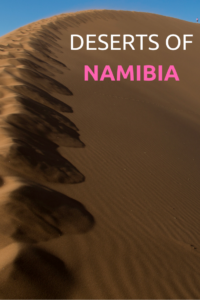
Viva the transparency! There are affiliate links in this article. This means if you click on a link and end up buying (or booking) through those websites, I’ll get a small commission, at no extra cost to you. This helps me maintain the blog, and continue to provide (hopefully) useful travel information. I advertise only products I have tested and sites I use myself!



